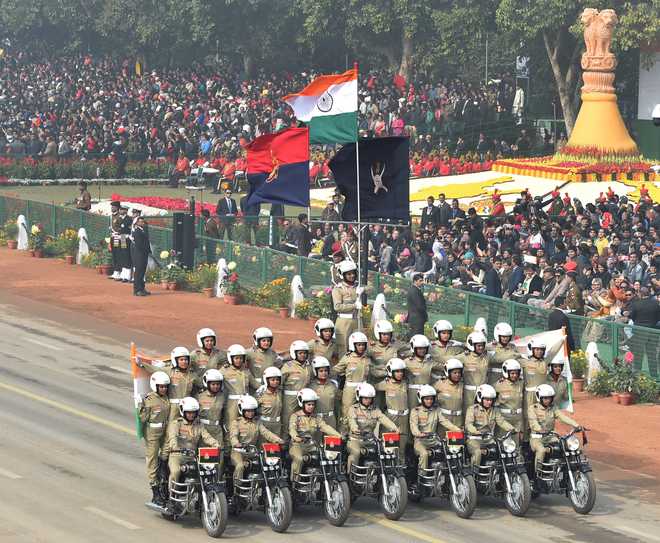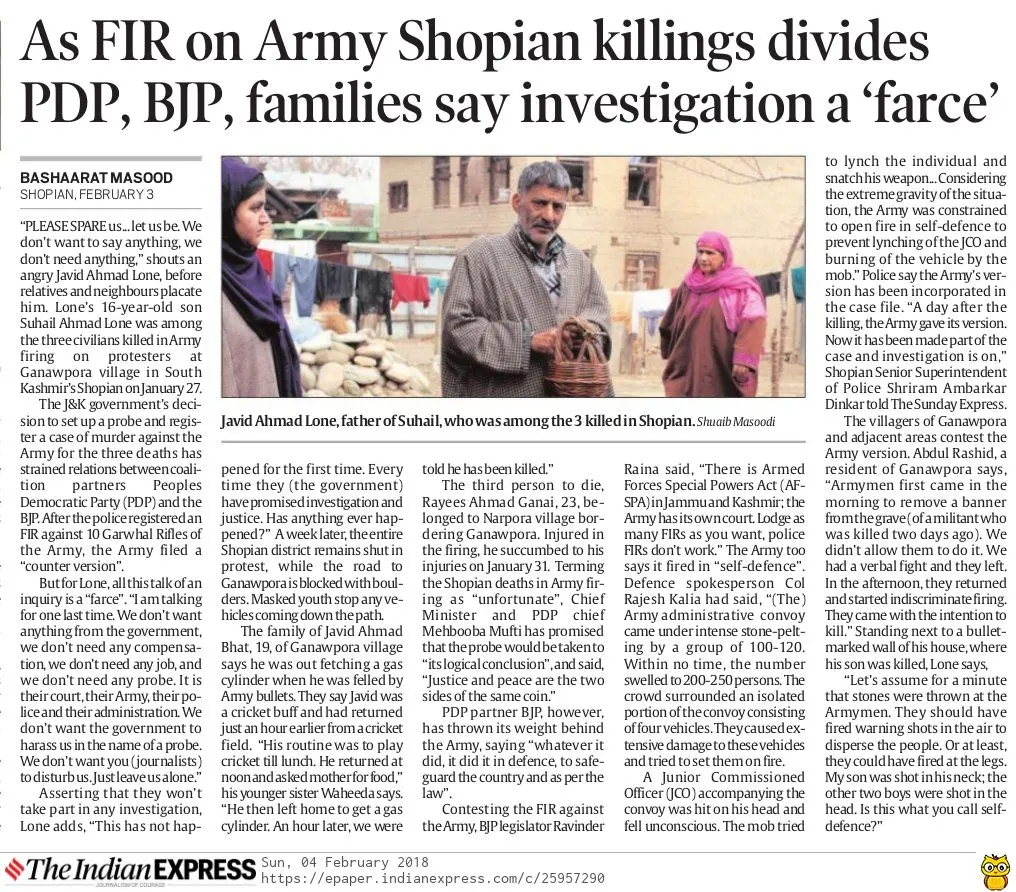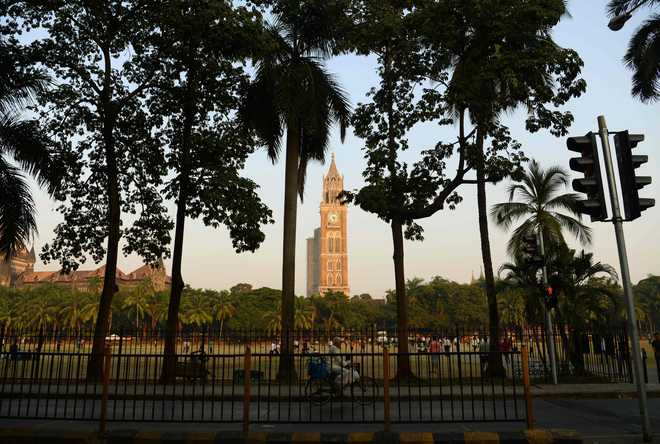he region’s military literature traces its roots to ancient times. It presents a rich treasure trove of experiences and opinions
Vijay Mohan
North India has remained a battleground since times immemorial. The land that has been the birthplace of countless soldiers has also produced voluminous military thought and literature over the past several thousand years. The mythological epics like the Ramayana and the Mahabharata or ancient scriptures contained in the Vedas to medieval works like Kautilya’s Arthashashtra, all point towards a structured military culture that once existed and the detail and importance that was given to the art and science of war.
After that there were several centuries during which evolution of indigenous military thought was overshadowed by foreign rule and socio-political leanings of some of the mass leaders. It was only towards the later part of the 20th century that Indian military writing saw a revival. Also the demand for greater public debate on matters of national security became more pronounced.
An army of writers
This, coupled with a greater access to information, personal literary interests and the notion of contributing towards the national cause, has led to an ever-increasing number of retired armed forces officers, senior bureaucrats, political leaders and even civilians penning down their opinions and experiences or simply putting together informative books and fictional volumes. Over the past decades, there have been thousands of books on military-related issues by Indian authors, but there is a feeling in some quarters that strategic culture in India is still in a nascent stage and needs a greater impetus.
The region, a witness to the most decisive wars, has produced a fair share of military writers of all hues, be it strategic issues, civil-military relations, historical narratives, service and legal matters, humour, individual feats and gallantry, picture books, regimental affairs, fiction and even comic strips.
When we talk of military history, a prominent name that crops up is that of Punjab Chief Minister, Capt Amarinder Singh. Among his notable works is The Monsoon War: Young Officers Reminisce — 1965 India-Pakistan War, an eyewitness account of the war when, as a young officer, he served as the Aide-de-Camp to the Lt Gen Harbaksh Singh, India’s top commander on the western front.
A Ridge too Far, detailing the Kargil conflict of 1999, Lest We Forget, the post-Independence military history of India, Saragarhi and the Defence of the Samana Forts, that delves upon a campaign listed among the 10 greatest battles of all time and Honour and Fidelity: India’s Military Contribution to the Great War 1914-18 are among his other literary contributions.
A service Chief is among those most qualified to write on matters military and the interface between the civilian leadership and military hierarchy. Towards this end, former Chief of the Army Staff, Gen VP Malik came up with From Surprise To Victory, a book that discusses the Kargil conflict that was fought during his watch. India’s Military Diplomacy: An Inside View of Decision Making and Defence Planning: Problems and Prospects and India’s Military Conflicts and Diplomacy are other books by him that delve into the realm of higher defence management in India.
A detailed review of the 1965 operations, including the main battles, air, logistics, Pakistani tactical concepts and lessons learnt from the war have been put forth by the then General Officer Commanding-in-Chief, Western Command, Lt Gen Harbaksh Singh in War Dispatches: Indo-Pak Conflict 1965. Another of his works, In the Line of Duty: A Solider Remembers, talks about the courage of conviction, setting high standards and inspiring others.
Missed Opportunities: Indo Pak War 1965 by Maj Gen Lachhman Singh Lehal, as the name suggests, is the author’s perspective on what could have been done differently for better gains. Top Brass, Operation Windfall: Emergence of Bangladesh and Significant Battle Since Independence by Brig HS Sodhi are important books in the series.
Veteran accounts
Many war veterans have written accounts of battles and operations that they have been closely involved with. Leap Across Meghna: Blitzkrieg of IV Corps 1971 is Brig OS Goraya’s narrative of operations in the eastern sector. He has also given his eyewitness account in Operation Bluestar And After. Combat Diary by Brig Jasbir Singh is an illustrated history of operations by 4 Kumaon, while Brig BS Mehta’s The Burning Chaffees is about the role of 45 Cavalry in 1971 and its troop composition. Indian Gunners at War is Maj Gen Jagjit Singh’s account of Indian Artillery’s war experience in 1971. In Battleground Chhamb — The Indo-Pakistan War of 1971, Maj Gen AJS Sandhu raises several strategic and tactical questions pertaining to the weak spot in India’s defence. An Infantry Battalion in Combat is Lt Col SS Ahlawat’s view on battle situations. Behind The Scene: An Analysis of India’s Military Operations 1947-1971 is a critical review by Maj Gen Jogindar Singh. With Honour and Glory: Wars Fought by India 1947-1999 is Maj Gen Jagjit Singh’s analysis of the country’s strengths and weaknesses affecting its security, a study he undertook when the Kargil conflict was underway.
Counter-insurgency narratives
A lot has also been written about Operation Meghdoot in Siachen, Operation Pawan in Sri Lanka and issues involing the armed forces in counter-insurgency operations.
Several books have emerged as a result of proceedings and discussions during seminars or academic events. Two such examples are Indian Army Aviation 2025 and Army 2020, both edited by Lt Gen Vijay Oberoi which explore contemporary challenges and propose a future road map. China Threat or Challenge, edited by Lt Gen JS Bajwa is a collection of 27 essays, which deal with almost all aspects of China as a nation state and its behaviour.
Military leaders have also been profiled by those who have had a chance to serve with them or have access to material that details their life and career. Field Marshal Sam Manekshaw: Soldiering With Dignity is Lt Gen Depinder Singh’s story about India’s most iconic commander. Leadership in the Indian Army: Biographies of Twelve Soldiers by Maj Gen VK Singh concentrates on personal accounts, anecdotes and reminiscences in order to highlight these leaders’personalities, and show the human face behind the military facade.
Some authors have touched upon the personal lives, feats accomplished and difficulties faced by military personnel in the line of duty. Rachna Bisht Rawat has put together 21 stories about how India’s highest gallantry award was won in The Brave: Param Vir Chakra Stories and also recounted the battles fought by five different regiments in Chhamb in her book, 1965: Stories from the Second Indo-Pakistan War. Another of her publications is Shoot, Dive, Fly: Stories of Grit and Adventure from the Indian Army that revolves around the perils, rigours, challenges, perks, thrill and adventure of a career in uniform.
Param Vir Vikram Batra: The Sher Shah of Kargil — A Father Remembers is a tribute by GL Batra to his warrior son martyred on the Kargil battlefield. Similarly in A Tale of Two Victoria Crosses, Lt Gen Baljit Singh tells the true story of the Victoria Cross moments of two subalterns, a British and an Indian, 30 years apart but ultimate in the scales of valour in pitched combat. He has also penned his memoirs in From My Memory Vault.
A law unto itself
As far as service matters and litigation is concerned, Maimed by the System by Maj Navdeep Singh, a practicing lawyer, is a collection of real life accounts of defence personnel, military veterans, disabled soldiers and their kin who were wronged by the system but fought successfully to claim their service and financial rights and dues. Pension in The Defence Forces deals with rules and regulations on the subject and Soldiers, Know Your Rights are among his other books, along with a collection of anecdotes, Fauj Hai Mauj.
A number of books on military law, litigation and service matters, such as Human Rights and the Armed Forces in Low Intensity Conflict by KS Sheoran, are available. International Encyclopedia of Terrorism Laws and Encyclopedia of Missile Defence and Non-Proliferation by Maj Gen RS Mehta are examples techno-legal works.
Then there are authors who have chosen to dig deep into history. A Military History of Medieval India by Maj Gen GS Sandhu is a study of warfare in India from the 11th to the 18th century of the Christian era. It traces the evolution of strategy, tactics and weapons employed by indigenous as well as invading armies during this period. Going further back in time, Air Marshal RK Nehra’s Hinduism and its Military Ethos relates to study of the Hindu military value system from the earliest times of mythology to the present times. Infantry In India by Lt Gen VR Raghavan, covers the evolution of the Indian Infantry from the Middle Ages to the modern times, including its performance in the present era, while Brig Kuldip Singh has written on Indian Military Thought: Kurukshetra to Kargil and Future Perspectives.
Attempts have also been made to move beyond the national borders such as Musharraf’s War and Flashpoints in South Asia by Maj Gen Rajendra Nath, Brig Jasbir Singh’s Escape from Singapore and A War Nobody Won: The Sino-Vietnam War 1979 by Col Harjeet Singh. He has also written India’s Contribution to the Great War as well as A War of Intervention The Russio-Georgia War, 2008.




































































































































